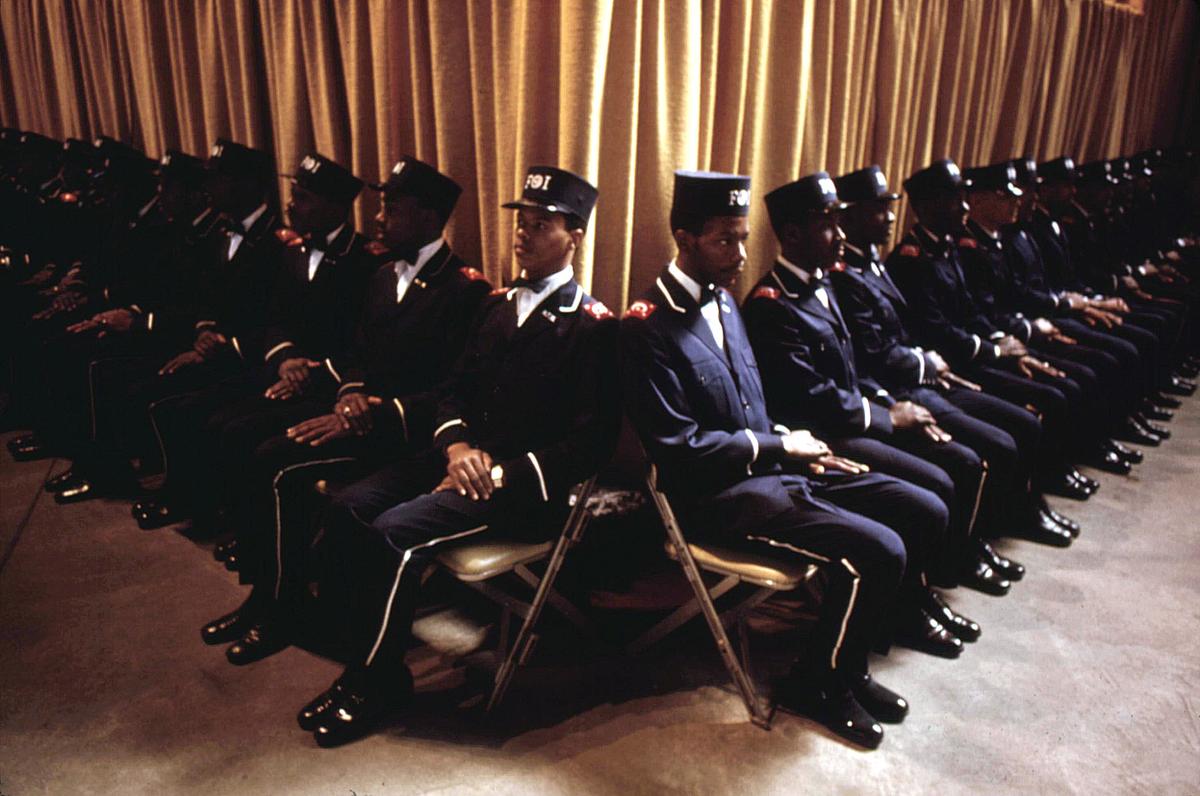“The Fruit Of Islam”, a special group of bodyguards for Muslim Leader Elijah Muhammad, at the base of the platform while Muhammad delivers his annual Savior’s Day Message in Chicago, March 1974. # John H. White/NARA, Featured Image
[dropcap]The[/dropcap] Nation of Islam was founded in Detroit by W. D. Fard in the early 1930s, and quickly thereafter the Honorable Elijah Muhammad assumed leadership of the Nation after Fard’s abrupt departure. By 1934, Muhammad had relocated to Chicago and soon built Temple No. 2 on the south side, in the South Shore neighborhood. It was here that businesses like Your Supermarket, once located on the southeast side of Cottage Grove, provided food for the black Muslim and non-Muslim community. And it is also here that the Muhammad University of Islam—an independently owned and operated school system—was established by Muhammad and remains today.
[mc4wp_form id=”6042″]


 Photo | John H. White, March 1974 (US National Archives)
Photo | John H. White, March 1974 (US National Archives)
 Photo | Paul Beston/Bettman Archive/Getty Images
Photo | Paul Beston/Bettman Archive/Getty Images

The Civil Rights Movement, also known as the American Civil Rights Movement and other names, is a term that encompasses the strategies, groups, and social movements in the United States whose goals were to end racial segregation and discrimination against African Americans and to secure legal recognition and federal protection of the citizenship rights enumerated in the Constitution and federal law. This article covers the phase of the movement between 1954 and 1968, particularly in the South.
The movement was characterized by major campaigns of civil resistance. Between 1955 and 1968, acts of nonviolent protest and civil disobedience produced crisis situations and productive dialogues between activists and government authorities. Federal, state, and local governments, businesses, and communities often had to respond immediately to these situations, which highlighted the inequities faced by African Americans. Forms of protest and/or civil disobedience included boycotts such as the successful Montgomery Bus Boycott (1955–56) in Alabama; “sit-ins” such as the influential Greensboro sit-ins (1960) in North Carolina and successful Nashville sit-ins in Tennessee; marches, such as the Birmingham Children’s Crusade and Selma to Montgomery marches (1965) in Alabama; and a wide range of other nonviolent activities. (Wikipedia).


You must be logged in to post a comment.